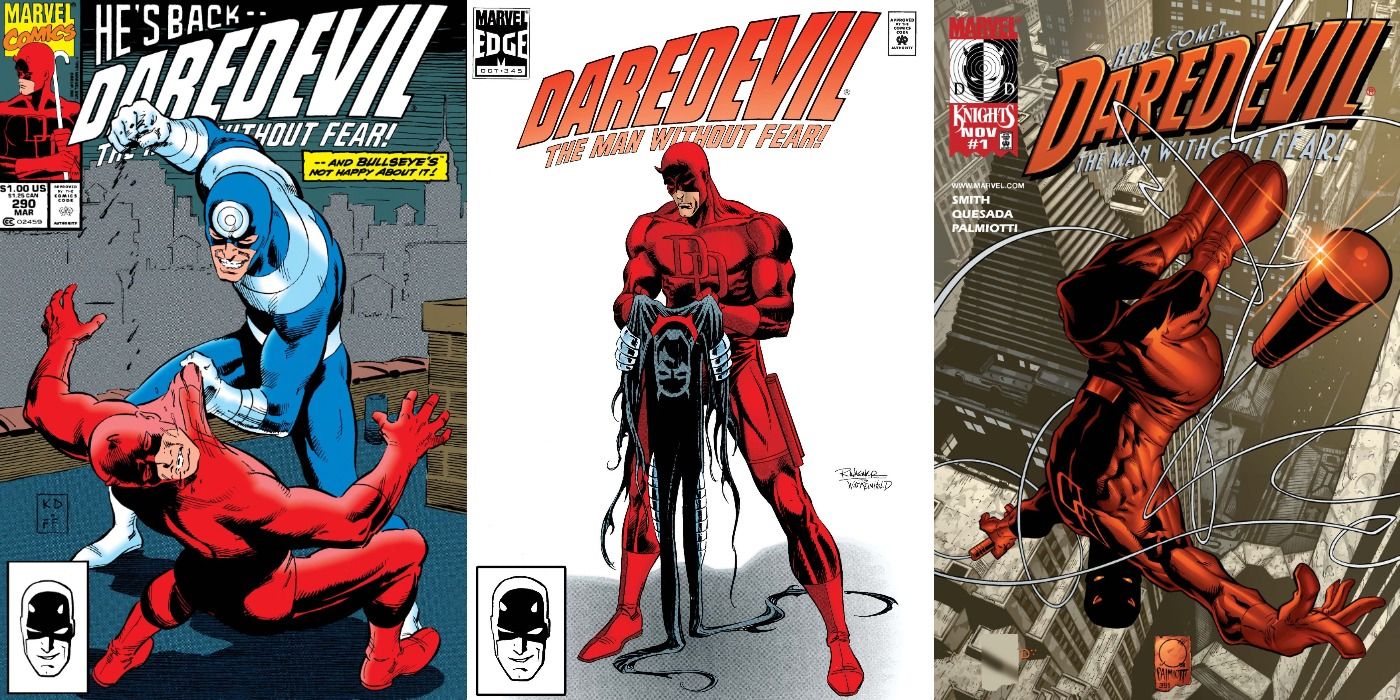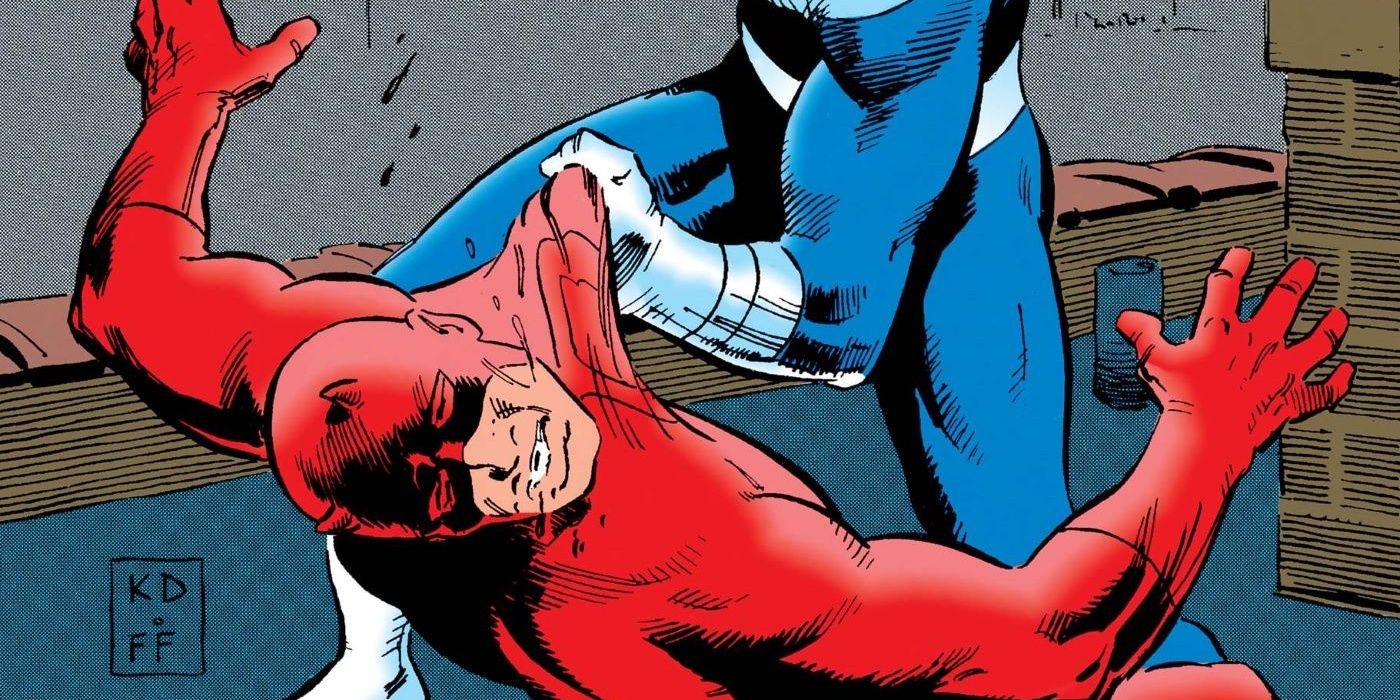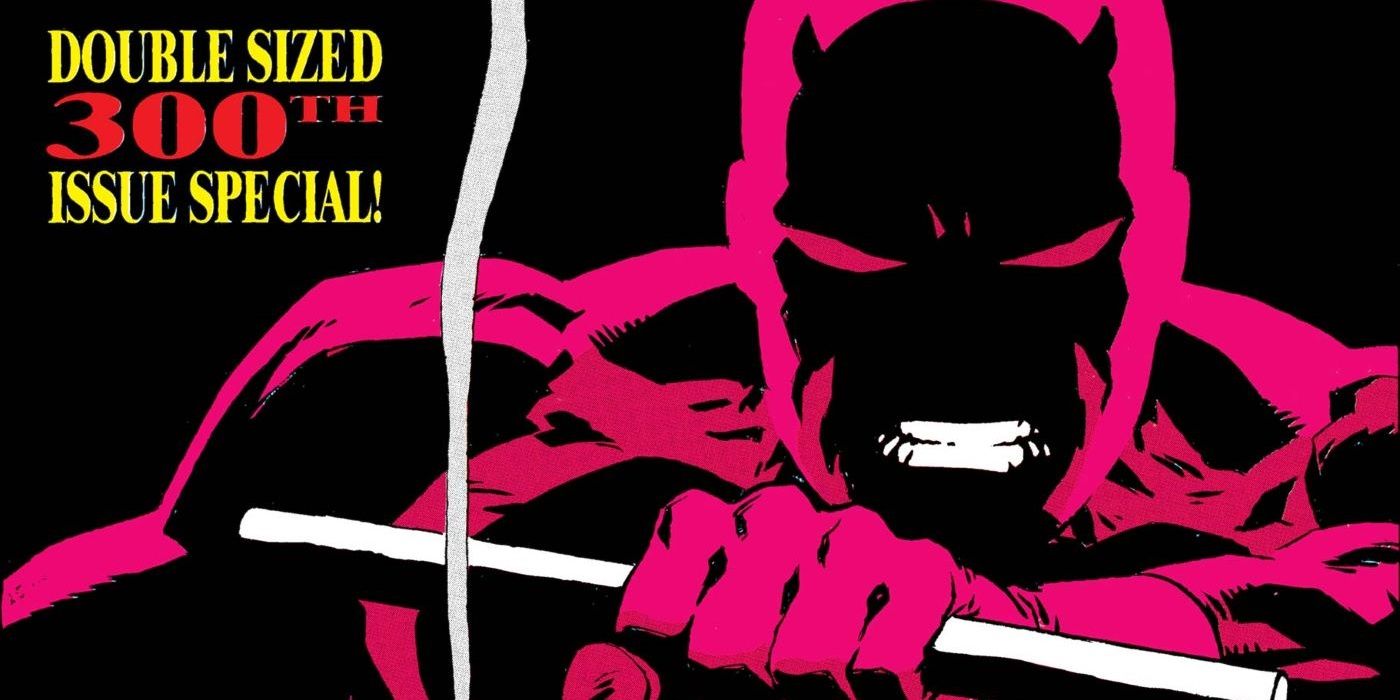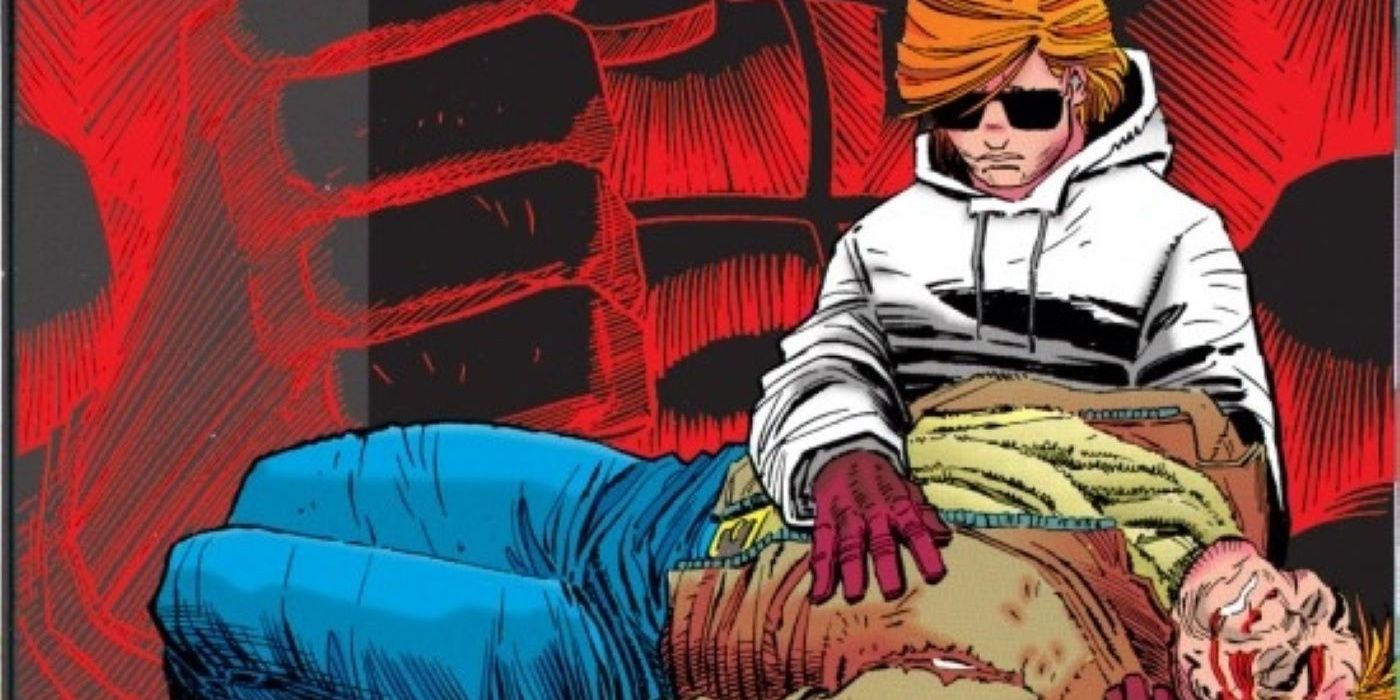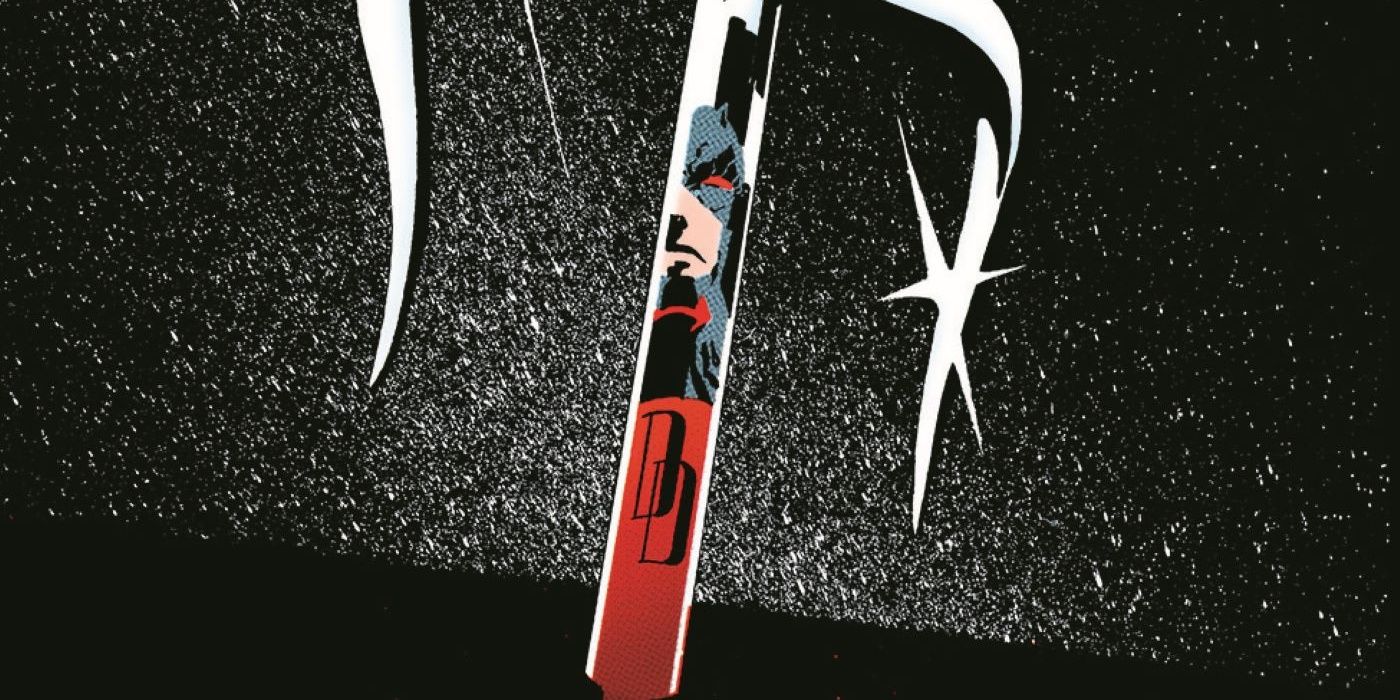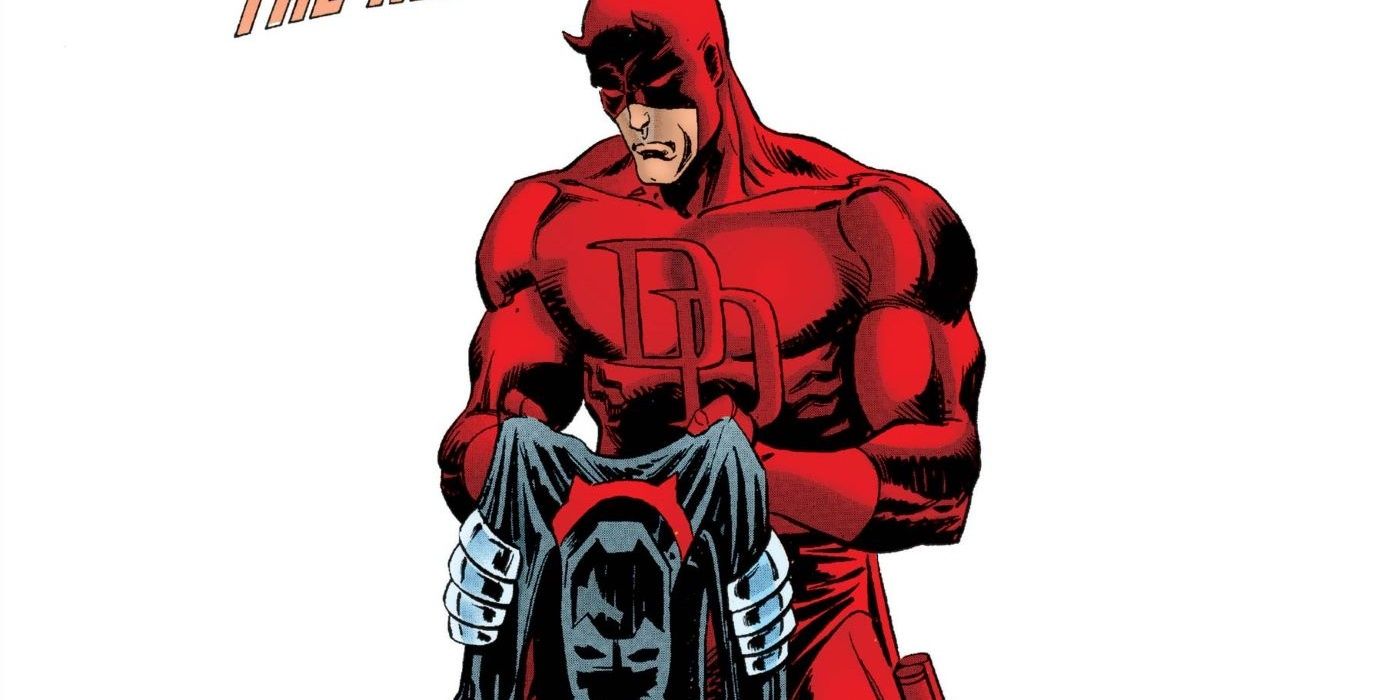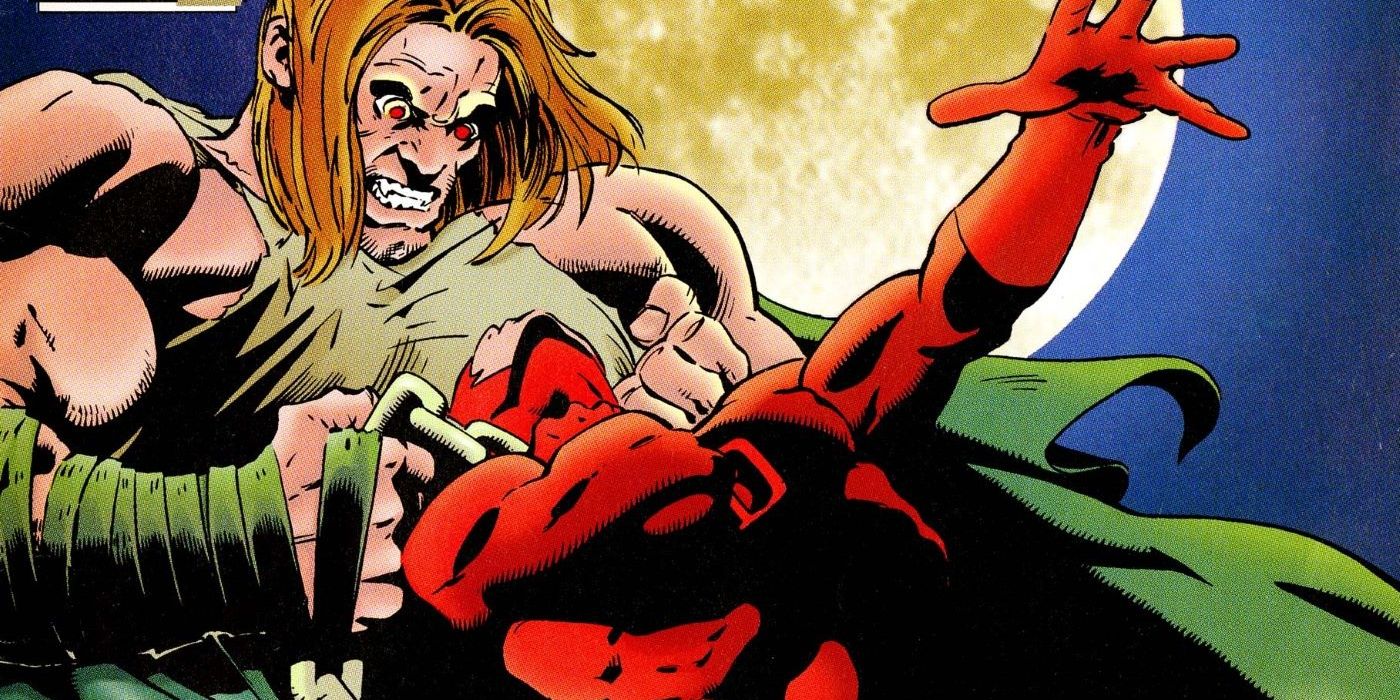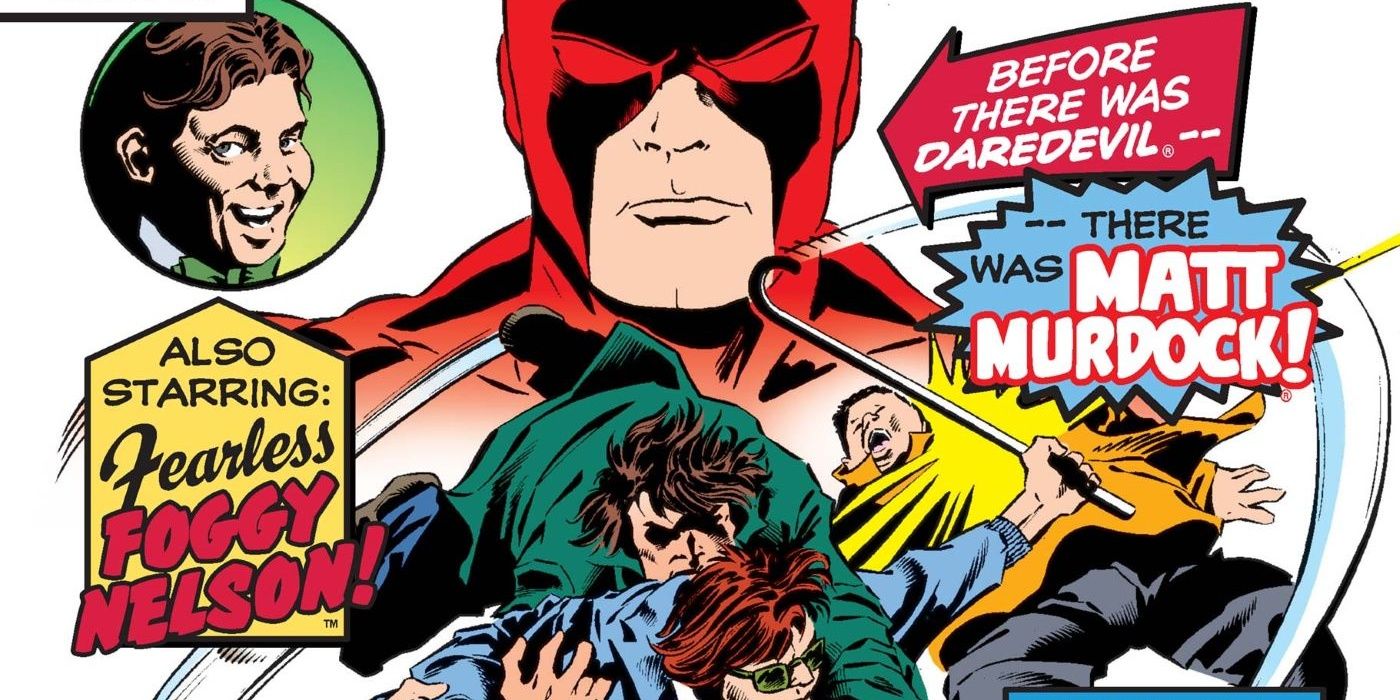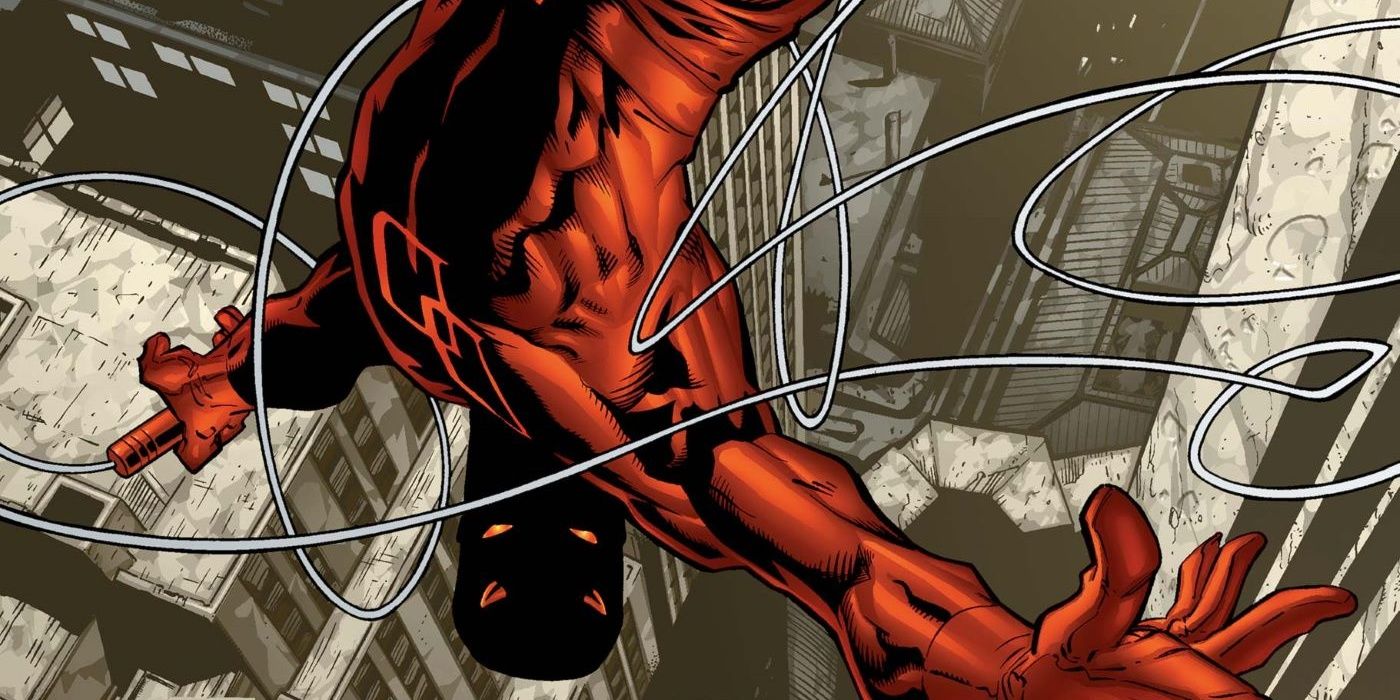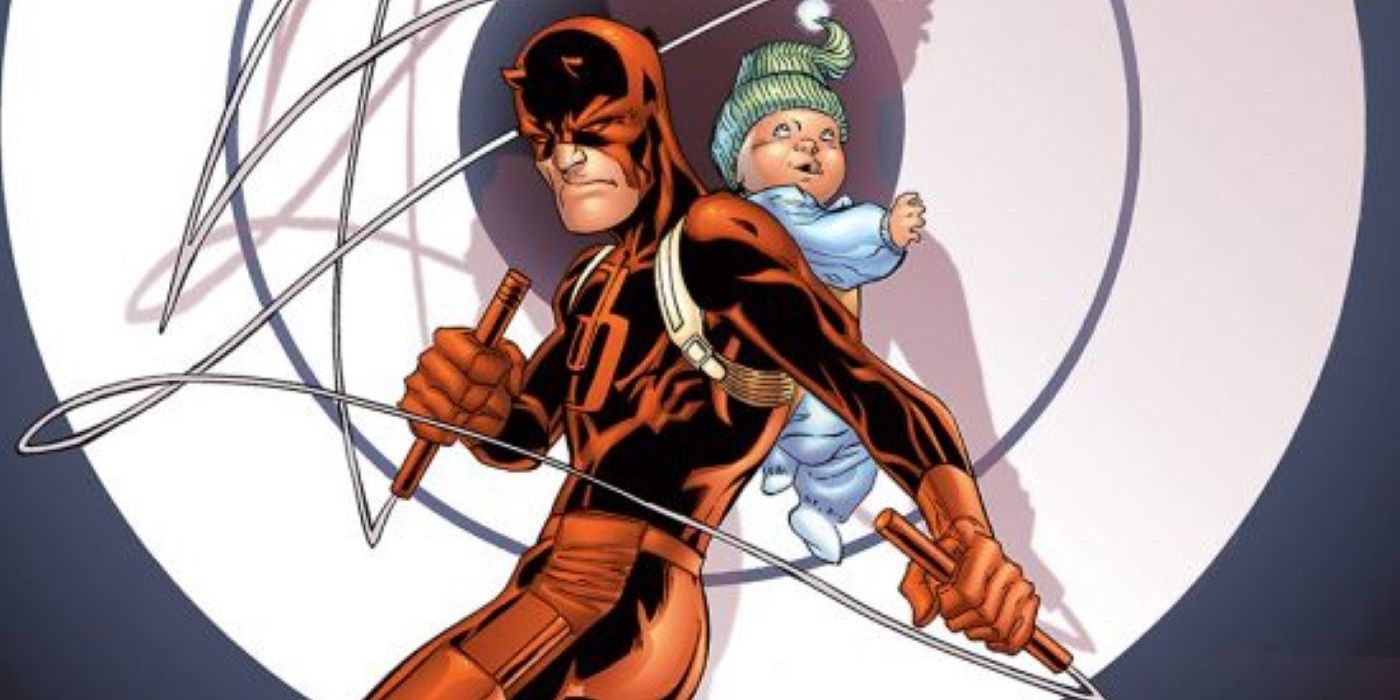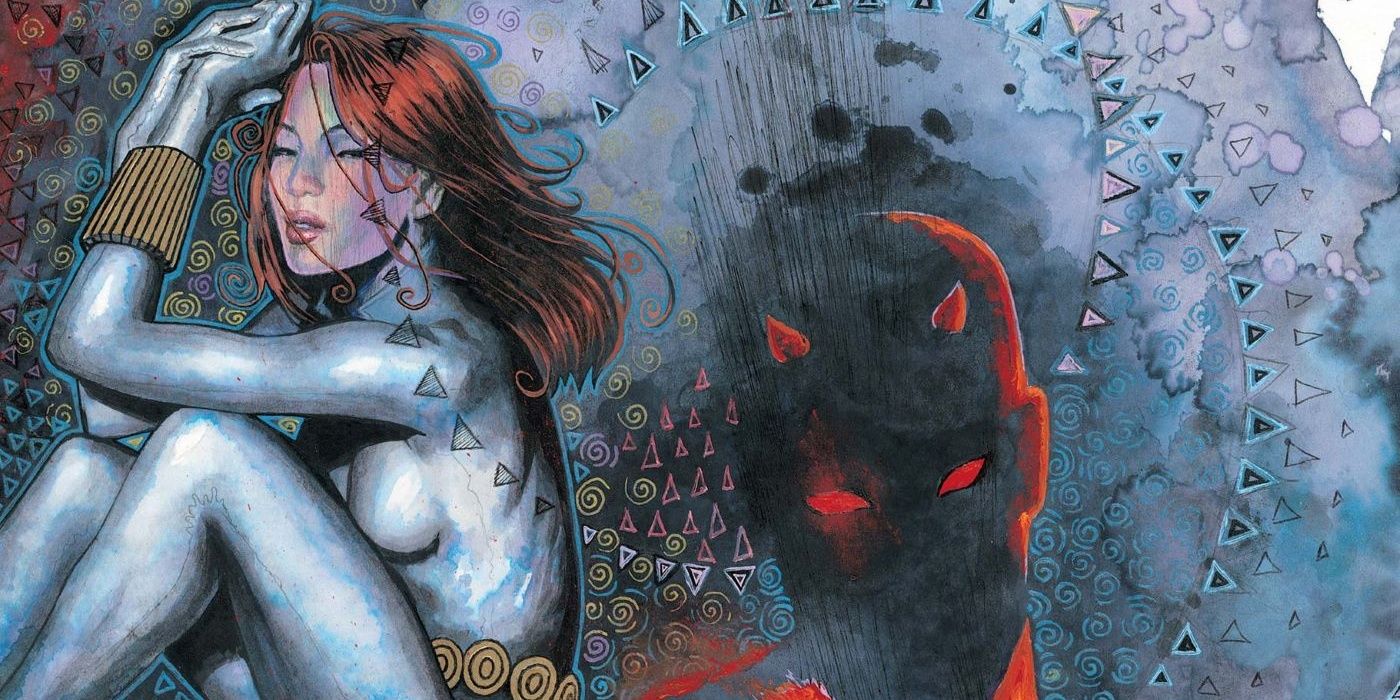With the news that Daredevil is coming to the MCU, the character's comic book stories are more relevant than ever. After achieving new levels of critical and commercial success in the 1980s, Marvel's Daredevil comic entered the 1990s with momentum behind it but would find it difficult to maintain.
While many superhero comics of the '90s evolved into more "extreme" iterations, Marvel's premiere blind hero appropriately spent the decade struggling to find a clear vision. There were a few notable bright spots as various writers explored their own interpretations of the Man Without Fear, but it wouldn't be until the end of the decade, and following a massive company-wide restructuring at Marvel Comics, that Daredevil would regain its status as one of the publisher's must-read comics.
"Bullseye!" (Daredevil #290, 1991)
The penultimate chapter of writer Ann Nocenti's four-year tenure on the title, Daredevil #290 is, for all intents and purposes, her swan song from the series, as the following issue serves primarily to reset Matt Murdock to his status quo. Nocenti finishes strong in her departure, presenting a tale in which an amnesia-stricken Matt is guided back into his heroic lifestyle purely by instinct, while gradually regaining his memories as he retraces his past failures and victories.
Meanwhile, Murdock's arch-nemesis, Bullseye, has been masquerading as Daredevil himself, building to a confrontation in this issue in which Bullseye, dressed as Daredevil, comes face to face with Matt Murdock, wearing Bullseye's own costume. Adding a new twist to an old rivalry, "Bullseye!" is a fitting conclusion to Nocenti's run, during which many of Daredevil's surrounding cast received considerable character growth.
"Long Live The King" (Daredevil #300, 1992)
Immediately following Nocenti's departure, incoming scribe Dan G. Chichester began an impressive term of his own, lasting from issues #292-342. In his first major storyline, "Last Rites," Matt Murdock finally goes on the offensive, putting into motion a plan to bring down Wilson Fisk, The Kingpin, one of the greatest Marvel antagonists to ever be adapted to movies and television.
Daredevil #300, entitled "Long Live The King," is a double-sized issue that wraps up Chichester's debut arc nicely while planting the seeds for future stories; resetting Matt's personal and professional lives along the way. As his tenure on the title continued, Chichester would receive favorable comparisons to legendary author Frank Miller, and the closing chapter of his first major outing represented the earliest steps in that direction.
Daredevil: The Man Without Fear #1 (1993)
After almost seven years away, legendary Daredevil writer Frank Miller returned to the character he defined in 1993's miniseries "The Man Without Fear." Arguably the most important creator to ever contribute to the mythos of Matt Murdock, Miller's prior tenures had already introduced many previously unknown characters and events to the tapestry of the hero's formative years, including his tutelage under enigmatic sensei, Stick, and his early history with the future femme fatale Elektra.
In his return to the character, Frank Miller was finally given the opportunity to tell these early tales of Matt Murdock's life in their entirety. Joined by superstar artist John Romita Jr. at the top of his game, the resulting tale is the definitive origin story of one of Marvel's most tragic heroes, contributing heavily to the version depicted in the critically acclaimed 2015 television series.
"Salvation For The Damned" (Daredevil #325, 1994)
In the final chapter of their game-changing "Fall From Grace" storyline, writer D.G. Chichester and artist Scott McDaniel pulled out all the stops, spinning a tale that is as timeless as it is definitively '90s. In a plot revolving around a race to obtain an experimental government bio-weapon, the story features appearances from Morbius, Venom, Nick Fury, and demonic clones of both Elektra and Daredevil himself, before finally reintroducing the real Elektra, who had been resurrected years earlier but had not made an appearance in a Daredevil comic since.
While it would have immediate ramifications on his relationships with his civilian allies, the saga is also notable for introducing Daredevil's short-lived armored costume, marking the first time Matt Murdock had unveiled a new look since adopting his classic red costume in 1965's Daredevil #7 almost 30 years earlier.
"Inferno" (Daredevil #345, 1995)
Following Chichester's dark and brooding stint on the title, writer J.M. DeMatteis would briefly take over as Daredevil series writer, immediately setting himself apart with a more lighthearted tone and back-to-basics approach to Daredevil after he suffered some of the worst events of his life. In addition to reverting Matt Murdock to his more "devil-may-care" swashbuckling personality, DeMatteis quickly did away with Daredevil's armored suit, returning him to his iconic solid red attire.
Essentially a soft reboot of the title, DeMatteis' approach was a much-needed breath of fresh air, harkening back to Stan Lee's early work with the character and bringing a sense of optimism to a comic that had spent the past decade being anything but optimistic.
"The Devil's Work!" (Daredevil #353, 1996)
Picking up where DeMatteis left off, Karl Kesel became the new regular writer of Daredevil with issue #353 and continued to steer the book in a more positive direction. Rather than confronting an underworld of organized crime and ninja assassins as he had done under recent writers, Kesel's Daredevil returned to battling more traditional supervillains as the book became increasingly more retro in its tone.
While it was a drastic departure from the types of stories Daredevil had come to be known for in the years since Frank Miller's tenure, Kesel's approach would nevertheless find its own resonance with readers, and would continue to be explored by subsequent writers Joe Kelly and Scott Lobdell.
"A Time To Say Farewell" (Daredevil #-1, 1997)
Marvel Comics' 1997 "Flashback" publishing initiative resulted in many of their ongoing series receiving special "-1" issues, depicting events that occurred before each title's first issue. In most cases, these stories were inconsequential, adding little to the tapestry of their associated protagonists. Daredevil #-1, "A Time to Say Farewell," is a notable standout, however.
Written by Joe Kelly, the issue explores Matt's relationship with his father, the aging boxer "Battlin'" Jack Murdock, against the backdrop of Matt's first day of college. While Jack is proud of Matt for being the first Murdock to ever attend university, he worries about the potential dangers of sending his blind son into the unforgiving world. The final scenes are a heartwarming depiction of Jack's realization of his son's ability to fend for himself, while the characterization of Matt's admiration for his father would only make the elder Murdock's ultimate fate that much more tragic in hindsight.
"And A Child Shall Lead Them All" (Daredevil vol. 2 #1, 1998)
After declaring Chapter 11 Bankruptcy in 1998, Marvel Comics outsourced a number of their struggling ongoing series', including Black Panther, The Punisher, and Daredevil, to the independent studio, Event Comics, helmed by Joe Quesada and Jimmy Palmiotti. Quesada himself would take over artistic duties on Daredevil, relaunching the title as part of the newly created Marvel Knights imprint with a brand new first issue and a debut arc written by cult favorite director Kevin Smith, of Clerks and Jay and Silent Bob fame.
Given unprecedented creative control, Smith and Quesada relaunched Daredevil with ambition, crafting a story that was equal parts Stan Lee's purple prose and Frank Miller's angst, while instilling a tone all their own. As this new iteration of Matt Murdock became the definitive interpretation, it would go on to influence the stories of subsequent writers for decades to come, and directly lead to Quesada's eventual promotion to Marvel Editor in Chief.
"Devil's Despair" (Daredevil vol. 2 #5, 1999)
In one of the most unexpected and trajectory-changing events to ever affect a comic book protagonist, Smith and Quesada killed off long-time Daredevil love interest Karen Page five issues into their run, simultaneously transforming perennial B-List Spider-Man villain Mysterio into an inarguable A-List threat in one of Daredevil's most personal fights.
Page had already overcome more misfortune than most comic book supporting characters but had recently achieved a degree of calm after the storm. Leading up to her death, Page and Murdock looked to be in the process of rekindling their often tumultuous relationship, and her death was a massive emotional blow to the hero. In just a few short issues, Quesada and Smith reestablished Daredevil as one of Marvel's most tragic characters while also returning the book to its former glory as one of the publisher's must-read series.
"Murdock's Law" (Daredevil vol. 2 #9, 1999)
Following eight issues written by Kevin Smith, indie comics superstar David Mack took the helm of the Daredevil comic in the second volume's ninth issue. Still reeling from his battle with Mysterio and the death of Karen Page, Mack's first issue sees Matt Murdock and law partner Foggy Nelson attempting to rebuild their practice as the book looks forward to yet another fresh start.
The issue is notable for beginning the run of David Mack that would later be joined by co-writer Brian Michael Bendis, who would go on to become arguably the most important Daredevil writer since Frank Miller himself. As Matt Murdock's new status quo is established, the issue also begins introducing new additions to his supporting cast, beginning with the debut of Maya Lopez, aka the deaf superhero Echo, who recently made her on-screen debut in the MCU series Hawkeye, portrayed by actress Alaqua Cox.

